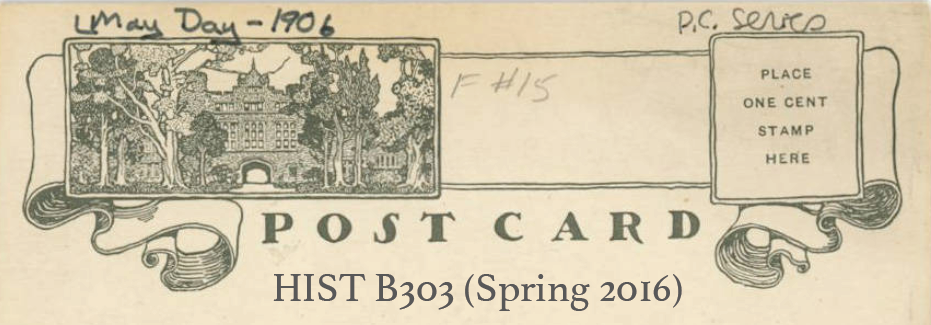Reading the “Minutes of the Black Studies Curriculum Committee 05/08/1969” made me reflect on concepts of 1960s and 1970s college student activism that I held. I think for many students in college now, this period of time seemed like the golden age or the beginning of student activism. The way that we look to these activists of the past is evident in the references that we make in planning our campus activism and also in the way that we dress and conduct ourselves. I think in many ways, student activists today try to emulate the activists of this period. I think this idolization comes from the books and films we see of this period. The first sentence of Ibram H. Rogers The Black Campus Movement begins: “Fists balled and raised, black berets, head wraps, swaying Afros, sunglasses, black leather jackets, army fatigue coats, dashikis, African garb, with Curtis Mayfield singing “We’re a Winner” in the background, shouting from fuming lips and posters in the foreground…” (Rogers 1) This is an example of the portrait of student activism created that adds to the mythology and the reverence that we give to student activists from the 60s and 70s. When current students look to these historical examples broadly and try to emulate them, they can feel that they are falling short of what their examples did and their commitment.
When current students looking to make changes on campus look solely to the results of students organizing, for example around the concern for a Black Studies concentration and minor, it is easy to assume that this work all happened with grand heroism. The students made demands and eventually with lots of work those demands were met. Reading the minutes gives a fuller and much more relatable view of student activism than what is normally portrayed. The minutes could have come from a meeting that happened last week. The same struggles of trying to have a conversation with those holding different personal interests in that conversation existed. Creating a plan for action seemed as difficult in this conversation as it was in a planning meeting I was a part of yesterday (about a different concern). This reading helped to break down the illusion of perfect grace in historical student activism. Making these documents available on the Internet is helpful for student activists today looking to historical examples. It is helpful to understand that many of the struggles are the same. Additionally, the format of the timeline helps to highlight how long these movements take and the not always so heroic and graceful looking means by which change happens.
